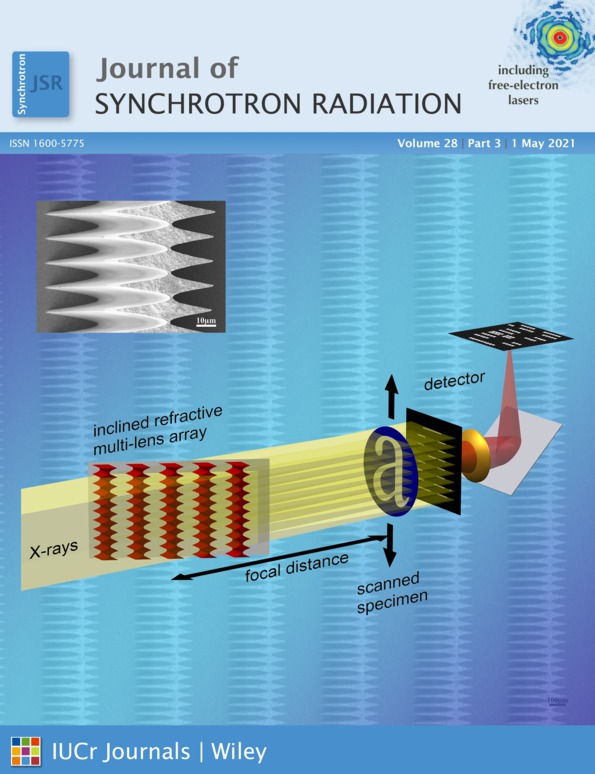Temperature-gradient analyzers for non-resonant inelastic X-ray scattering
Abstract
The detailed fabrication and performance of the temperature-gradient analyzers that were simulated by Ishikawa & Baron [(2010). J. Synchrotron Rad.17, 12–24] are described and extended to include both quadratic and 2D gradients. The application of a temperature gradient compensates for geometric contributions to the energy resolution while allowing collection of a large solid angle, ∼50 mrad × 50 mrad, of scattered radiation. In particular, when operating relatively close to backscattering, π/2 − gθB = 1.58 mrad, the application of a gradient of 1.32 K per 80 mm improves the measured total resolution from 60 to 25 meV at the full width at half-maximum, while when operating further from backscattering, π/2 − gθB = 6.56 mrad, improvement from 330 to 32 meV is observed using a combination of a gradient of 6.2 K per 80 mm and dispersion compensation with a position-sensitive detector. In both cases, the operating energy was 15.8 keV and the incident bandwidth was 22 meV. Notably, the use of a temperature gradient allows a relatively large clearance at the sample, permitting installation of more complicated sample environments.




